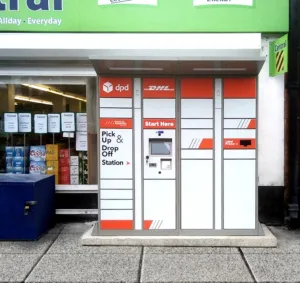By TouchNote CEO Dan Ziv
Understanding your customer base is one of the most essential steps to building a successful business. Through an in depth understanding of your customer, you can begin to anticipate trends, desires and behaviours which can help you cater your product to the right audience. Without this insight, you’re flying blind and hoping for the best.
Throughout the last year, one of the biggest consumer trends has been the boom of the subscription economy. The average Brit now spends £60 a year on subscription services. Instead of isolated, one-off transactions, consumers have gravitated towards lasting relationships with brands. In turn, brands have focused on ensuring a repeated value for their product.
But if this success is to continue for subscription businesses, it’s important not just to understand that people are making this shift, but why they’re doing it.
A long-term relationship
Previously, one-off transactions were the default mode of contact between companies and consumers. Consumers may have returned to brands on a repeat basis, or even had favourites, but there was never a continued investment.
This difference is perfectly captured within TouchNote, a personalised card sending subscription service. Traditionally, people think of card sending as a one-off transaction for special occasions. However, when TouchNote made the switch to the subscription economy back in 2018, we anticipated that consumers were willing to enter a longer-term model if there was repeated value.
Through this, our customers now send cards ‘just because’ as an authentic and meaningful way to stay in touch with their loved ones. Similar shifts are happening across the subscription economy, so what can we learn?
The key thing to note is that consumers are planning ahead and are more attuned to their own needs. Through music services, food boxes or personalised gift sending, consumers are now anticipating their own behaviour, and deciding to make investments in what is important to them. These investments are no longer just isolated transactions, but sustained investment in themselves- 27% of those who invest in a subscription service cite a mood boosting factor.
Value is king
As consumers have become increasingly attuned to their own needs, they’ve also placed a higher bar on companies demonstrating value. A longer-term relationship is only a viable option if brands demonstrated repeated, lasting value throughout that relationship. Simply, how does the service improve a consumer’s life?
Previously, isolated payments could be brushed away as a ‘one off’, a panic buy or a quick fix. With a subscription that often goes on for months, if not years, consumers have higher expectations. Often, they’ll buy into the general idea of a brand, but expect evolution on top of that. The subscription model facilitates this and allows companies to provide more catered, considered tweaks to their offering, instead of sweeping developments to constantly attract new customers.
To secure this brand loyalty in future, companies must constantly evolve their product to meet changing demands, keep their customers enthused and demonstrate the value their product has on a person’s life.
Stability through uncertainty
Subscriptions boomed massively in the pandemic; almost 40% of Brits signed up to a new service in lockdown. This growth was powered throughout lockdown by the need for stability in a time of uncertainty. According to research from Emarsys on physical subscriptions, 30% of consumers said it was nice to receive something in the post each month. On digital, 19% said these services helped them handle loneliness and over 30% said they helped them relax.
As everyone’s lives became increasingly uncertain, we can see that consumers took refuge in subscriptions. Whether it be regular boxes of food at their door, movies to watch on tv, or opportunities to stay in touch with their loved ones, the regular drumbeat of subscriptions kept consumers grounded.
Predicting the future
Anticipating consumer behaviour is always difficult. But in the fallout of the pandemic, those who rise to the top will be those who have used this last year to gain a deep understanding of their customers.
Subscription services hold a natural advantage here because their deep, lasting relationship with consumers not only instils a sense of brand loyalty from the consumer, but also of continued creative value from the company.
The increasing focus on providing a constant, catered service positions subscription services perfectly to adapt to post-pandemic behaviour. However, if services take their customers for granted and don’t innovate their service, then the pandemic subscription boom could end there and then.







